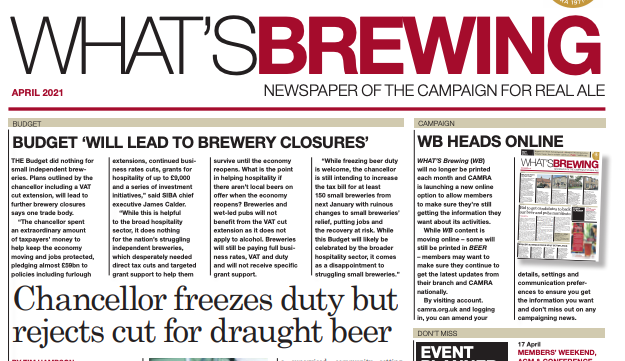Table beer back on the table
Audio Description
Login here to listen to the audio description

Table beer has roots that stretch back for hundreds of years, both in the UK and across Europe. The classification is not one made by style but by strength. Table beer was the “middle of the road” in ABV terms, designed to be consumed in relative quantity and, as the name suggests, with food.
We know from financial records that in the 18th century table beer attracted a higher rate of duty than the weaker small beer and less than strong beer. Over time the distinction between the types became blurred. Small and table beer were officially merged for excise purposes in 1802.
Today, there is not much more clarity surrounding the definition of this category. Anything from around 2.5 up to 3.5 per cent or so can be acceptably described as a table beer, regardless of style.
The Kernel unquestionably makes the OG contemporary table beer. Evin O’Riordain was inspired by Redemption Brewing Co’s session pale ale, Trinity, and ABC, a one-off from Brew Wharf in 2010. Both were three per cent, both were cask ales. The Kernel’s effort, first brewed in 2012, sought to replicate their body and character by using secondary fermentation to create depth even in bottle and keg. Now, The Kernel Table Beer has come full circle and has also been regularly available in cask for the last two years.
Thanks to its flavour and fullness, it has become the platonic ideal of a table beer, the industry archetype. But with The Kernel, the beer in your bottle or glass ebbs and flows over time. The brewing team has the freedom to pick whatever hop combinations it likes.
“We can celebrate each batch as being an individual beer,” Evin told me. “They’ll all be recognisably Table Beer, but you might get a different level of bitterness, or one might be slightly drier than the next. It’s really enjoyable for us to be able to celebrate those differences. This is us trying to rebel slightly against the mechanistic nature of production.”
Where The Kernel has led, many others now follow. Sean Ayling, of Tom’s Tap & Brewhouse in Crewe, brews table beers which were directly inspired by how impressed he was with Evin’s interpretation. Sean also mixes up the hops to keep it interesting and uses Kveik yeast as a way of bringing that all-important mouthfeel to the party. His taproom is currently serving version 19 of his recipe but tells me lower ABV beers divide opinion.
“There are those who always start on table beer in the taproom, those who only drink table beer and those who won't touch it.”
We are being told that the public wants more lower alcohol products, but while Kernel Table Beer has seen steady growth since 2012, there hasn’t been any noticeable uptick in sales due to changing consumer tastes. Personally, I love moderate-strength beers and celebrate their increasing flavour, body and refinement. I very much hope we are at the start of a trend. Table beers are session-strength for people of smaller stature like myself and if there’s anything I like more than one great pint, it’s two.
As well as being perfect for British vertical drinking, table beer also has a wonderful affinity with food. Most beers that bear the table beer label are pale ales. Their hop-forward flavour in combination with a lower ABV makes them a wonderful pairing for fragrant foods with complex spicing like Vietnamese Pho or a Goan-style fish curry. More delicately flavoured foods also benefit from their delicate perfume, like moules frites or Caesar salad.
Table beer doesn’t have to be pale though. In Belgium, tafelbier intersects with saison, which I once memorably saw described as the Swiss army knife of beer and food matching. Imagine, if you will, the refreshing tang of Burning Sky’s 3.4 per cent Petite Saison with a young goat’s cheese or matched with a simple ham salad cob down the pub.
While the headlines may have been grabbed by Greene King reducing the ABV of its yawn-inducing IPA after the changes to duty last August, much more interesting was the slight change to Hook Norton’s classic Hooky Bitter, bringing it into the table beer fold at 3.4 per cent.
It remains as drinkable a beer as ever, with an excellent balance of earthy, citrus, malt and bitter notes. I would argue that a traditional bitter has even more versatility for food pairing than a saison. The depth of flavour gives a lot to work with, but sometimes you can’t beat the classics. Pair this with a ploughman’s lunch and thank me later.
Surely few gastronomic experiences cause a greater sensory thrill than sitting with a good book and sipping a pint of Hobson’s 3.2 per cent Champion Mild with a bag of Black Country-made pork scratchings close to hand.
It’s time to look again at what lower strength beers can do for you. Don’t throw your hands up in alarm at the threat of “drinkflation”. Celebrate the increased opportunity for light but flavourful beers that will awaken your inner Jamie Oliver.

 view archive
view archive
 view events
view events